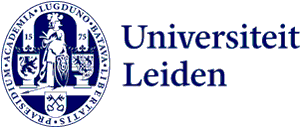
Academia in motion: a different form of recognition and reward
A better balance between teaching and research duties, greater recognition of team performances and the elimination of simplistic assessment criteria. The ‘Academia in Motion’ paper published by the Leiden University Recognition and Rewards describes the main problems with recognition and rewards in academia and makes some recommendations.
With Academia in Motion, Leiden University has joined the national initiative for a new form of recognition and rewards in academia. This was sparked by worries at all universities about the heavy workload, the quality of assessment and the lack of transparency in career policy. The paper is the result of many discussions that the members of the steering group held at the faculties. Manon van der Heijden and Sarah de Rijcke are the chairs of the steering group. Van der Heijden is Academic Director and a professor at the Institute for History. De Rijcke is Professor of Science and Evaluation Studies and director of the Centre for Science and Technology Studies. What do they hope to achieve?
Address the imbalance in duties
The staff workload is an important issue. One reason why this is too high, say the two chairs, is because too much emphasis is placed on research performance, whereas teaching and societal relevance are undervalued. Van der Heijden: ‘The balance in these tasks and their recognition is skewed. This is a problem if you want to become an associate professor and are only assessed on your research, when 80 percent of your duties consist of teaching.’
Eliminate simplistic criteria
Another shortcoming is the way in which the quality of research is valued and measured. This is generally with simplistic quantitative indicators, such as the number of academic publications and the journal impact factor, which indicates how often an academic journal is cited. De Rijcke: ‘This is now also used to assess individual researchers when it is in fact a measure of a journal. The risk of using unsuitable one-dimensional measures is a possible narrowing of the research space.’ Only suitable criteria should be used in evaluations, and there should be more room for the quality and creativity of staff.
More recognition of team performances
Academia in Motion is also calling for more recognition of team performances. Van der Heijden: ‘In Leiden a great deal of attention is paid to the ambitions of that brilliant researcher who receives plenty of recognition, but such performances are possible because that individual works in a good team or institute. Too much attention for the prima donnas comes at the expense of the team.’
De Rijcke adds: ‘When I was following training on applying for an individual grant I had to learn to stop saying “we” because apparently I would stand less of a chance. That didn’t do justice to the reality.’
Fortunately, grant providers like the Dutch Research Council (NWO) and umbrella organisations like the Association of Universities in the Netherlands (VSNU) and the Royal Netherlands Academy of Arts and Sciences (KNAW) also believe that the system should change and are working on a different application and assessment method.
Response from Vice-Rector Hester Bijl
Academia in Motion has the full backing of the Executive Board. Vice-Rector Hester Bijl supports the steering group’s findings and is pleased that the paper clearly describes the ambitions and main obstacles. In a response, she said: ‘This paper offers some good ideas on how to effect a much-needed culture change. Over the coming months we will all be discussing how to give this concrete shape. Obviously, it’s not something that you just roll out, but it begins with identifying the problems and gaining more awareness throughout the organisation of how we can do things differently.’
Share best practices and recognise differences
Bijl, Van der Heijden and De Rijcke all point to the many good initiatives that are already underway. The national Senior Teaching Qualification programme and the associate professor promotion pathway demonstrate greater recognition of the teaching, as do various faculty initiatives. De Rijcke: ‘The trick is to make the good examples more visible and to share them more with one another.’ That is not to say that the solution will be one size fits all. The paper emphasises that differences between disciplines and institutes should be taken into account.
Join dots with the strategic plan
The steering group hopes to be able to carry out a survey in February of differences in careers, transparency and leadership. And it may enlist focus groups to further develop the plans. De Rijcke: ‘When the steering group has finished this won’t mean that the process is complete. What we will have are pointers and scenarios for which steps to take next. And there is plenty of opportunity to join the dots with the strategic plans of the University and the faculties.’
Van der Heijden adds: ‘This is a long-term development that will happen in steps as it gains the buy-in of the wider organisation.’
Share experiences in national movement
De Rijcke and Van der Heijden are also in close contact with the chairs of similar steering groups at other Dutch universities and in regular international consultation. Van der Heijden: ‘A lot of information is exchanged about good practices and the different takes on recognition and rewards.’
De Rijcke: ‘It’s a national movement with a local translation in all the different steering groups. In Leiden we have consciously chosen a bottom-up process because it won’t work otherwise.’
